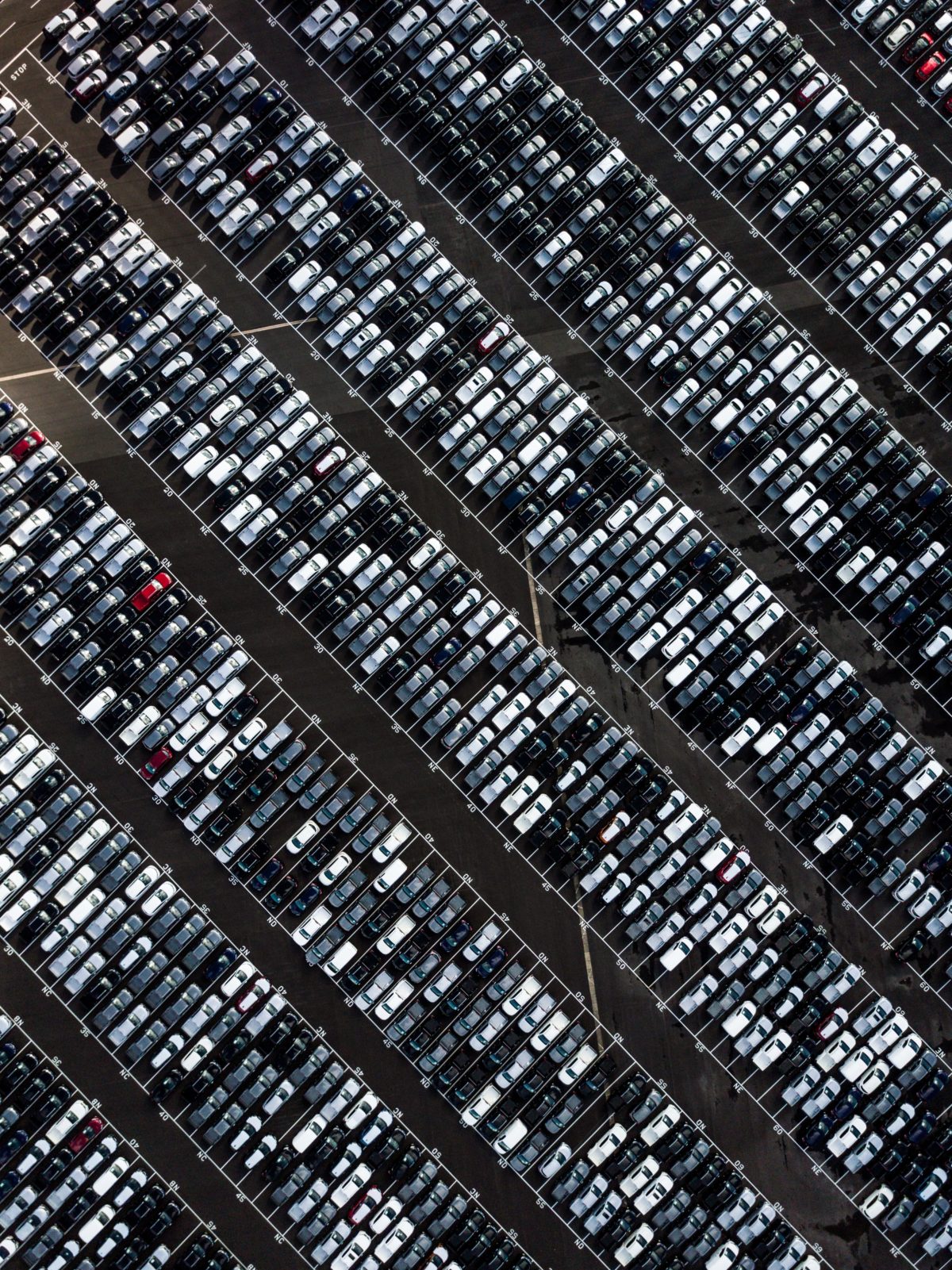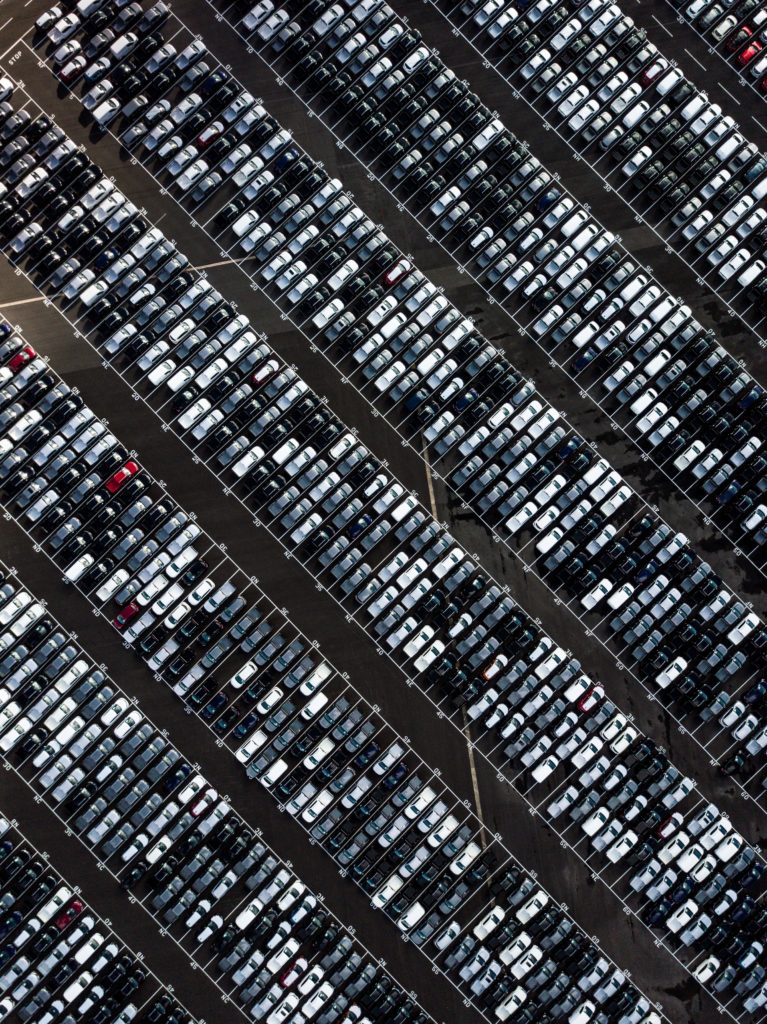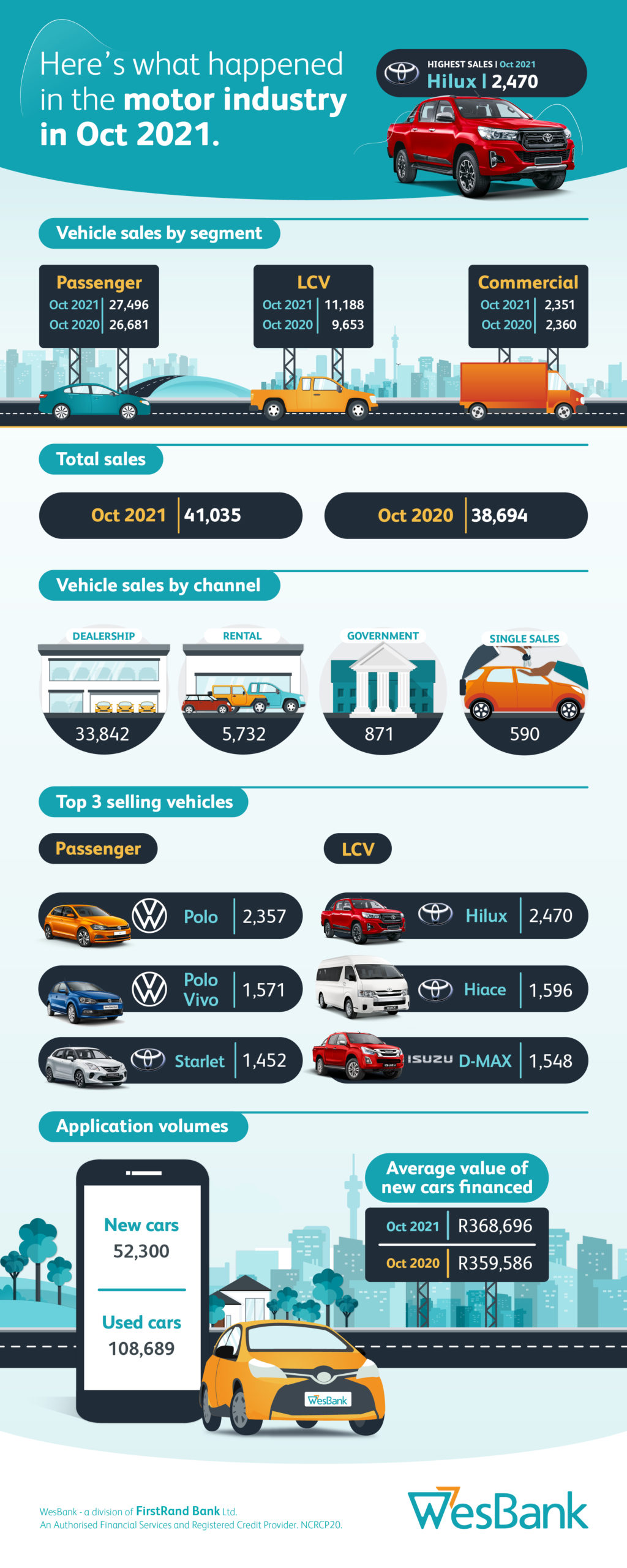Press Release: WesBank
Stock shortages continued to thwart South Africa’s new vehicle market during October. However, the market continued to show a robust performance, despite the volumes being lower than September.
According to naamsa | the Automotive Business Council, 41,035 new vehicles were sold during October, an increase of 6.1% over the same month last year. Although September sales were the second-best volume month this year, October sales were 4.9% slower than last month. It is also important to note the context of October sales within the four months this year that have sold more than 40,000 units.
“The new vehicle market appears to be recovering strongly, demand out-stripping current supply constraints,” says Lebogang Gaoaketse, Head of Marketing and Communication at WesBank. “The second half of the year has performed strongly since the mid-year lockdown restrictions, with the market trading above 40,000 units a month for the past three months.”
WesBank’s own data indicates a resurgence in the South African motor industry. “While we have seen high demand for pre-owned vehicles over the last two years, a slow shift back towards new vehicles may be currently underway,” says Gaoaketse. “Compared to a year ago, applications for to WesBank for new car deals rose 1.8% during October, while applications for pre-owned deals declined 5.9%. In addition, the bank’s used-to-new ratio has shifted over the 12-month period from 2.25 used vehicles financed for every new vehicle a year ago, to 2.08.”
However, the issue of supply is a global factor that skews the overall market picture. “Until global manufacturing stabilises off the back of the pandemic and resolves its micro-chip shortages, consumer and business purchase decisions will be swayed by availability and necessity,” says Gaoaketse. “The good news is that South African car dealers are in a much more sustainable position than a year ago.”
South Africa’s new passenger car market was up 3.1% to 27,496 units, displaying a robust consistency throughout the year. The Light Commercial Vehicle (LCV) market remains far more volatile. While it was down 10.9% in September, the segment bounced back to increase 15.9% during October to 11,188 sales.
A similar trend played out in the dealer space with passenger car and LCV volumes up 2.7% and 16.5% respectively. The market once again benefited from a sizeable volume of rental sales, with 5,002 passenger cars and 730 LCVs selling into fleets.
“Although the market looks in better shape, affordability continues to be a major consideration,” says Gaoaketse. “Significant fuel price hikes this month and the prospect of interest rates potentially increasing with the return of inflation are factors for consumers to consider when purchasing their next vehicle.”







